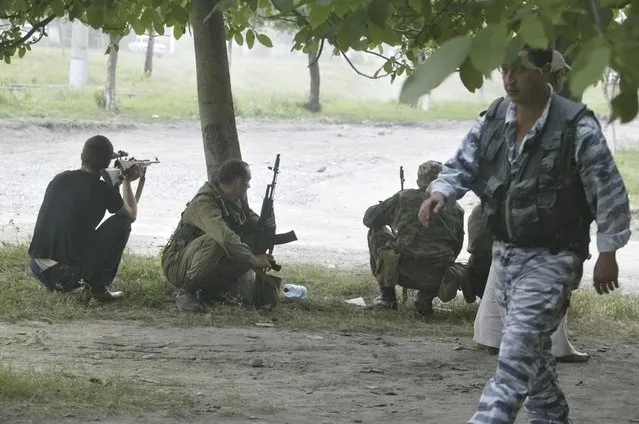
The Beslan school siege (also referred to as the Beslan school hostage crisis or Beslan massacre) started on 1 September 2004, lasted three days, involved the illegal imprisonment of over 1,100 people as hostages (including 777 children), and ended with the death of at least 385 people. The crisis began when a group of armed Islamic Groups, mostly Ingush and Chechen, occupied School Number One in the town of Beslan, North Ossetia (an autonomous republic in the North Caucasus region of the Russian Federation) on 1 September 2004. The hostage-takers were the Riyadus-Salikhin Battalion, sent by the Chechen warlord Shamil Basayev, who demanded recognition of the independence of Chechnya, and Russian withdrawal from Chechnya. On the third day of the standoff, Russian security forces stormed the building with the use of tanks, incendiary rockets and other heavy weapons. At least 330 hostages were killed, including 186 children, with a significant number of people injured and reported missing. The event led to security and political repercussions in Russia; most notably, it contributed to a series of federal government reforms consolidating power in the Kremlin and strengthening of the powers of the President of Russia. As of 2016, aspects of the crisis in relation to the militants continue to be contentious: questions remain regarding how many terrorists were involved, the nature of their preparations and whether a section of the group had escaped. Questions about the Russian government's management of the crisis have also persisted, including allegations of disinformation and censorship in news media, whether the journalists who were present at Beslan were allowed to freely report on the crisis, the nature and content of negotiations with the terrorists, allocation of responsibility for the eventual outcome, and perceptions that excessive force was used. The European Court of Human Rights in a 2017 ruling criticised Russia for not taking sufficient precautions before the event and used excessive lethal force when concluding the siege which violated the “right to life”. Here: Solders sit at the trees in front of the school building, captured by the terrorists, Beslan, North Ossetia, Wednesday 01 September 2004. According to different sources from 15 to 30 gunmen captured the school building taking hostage up to 400 people including about 200 pupils. (Photo by Anatoly Zhdanov/EPA/Komsomolskaya Pravda)
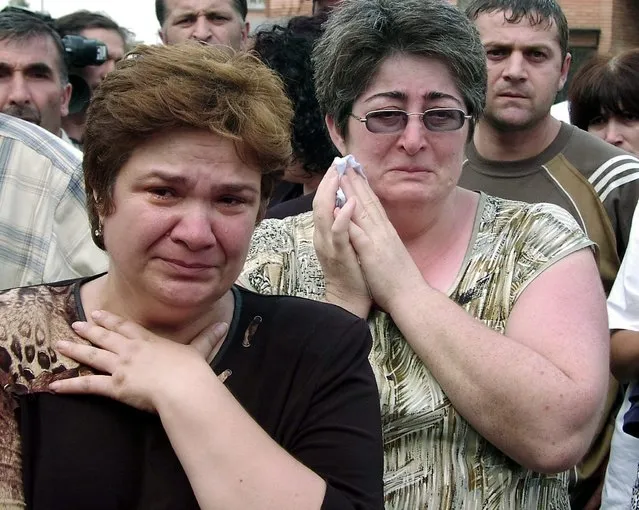
On September 1, 2004, Chechen militants stormed an elementary school in the town of Beslan in the Russian republic of North Ossetia. They took 1,100 teachers, children, and their relatives hostage, demanding the withdrawal of federal forces from Chechnya as a condition for their release. On September 3, 2004, Russian security forces stormed the building, resulting in a battle in which more than 330 hostages died, including 186 children. Here: Women weep at the local school building, captured by the terrorists, Beslan, North Ossetia, Wednesday 01 September 2004. (Photo by Ramazan Lagkuyev/EPA/Severnaya Ossetia)
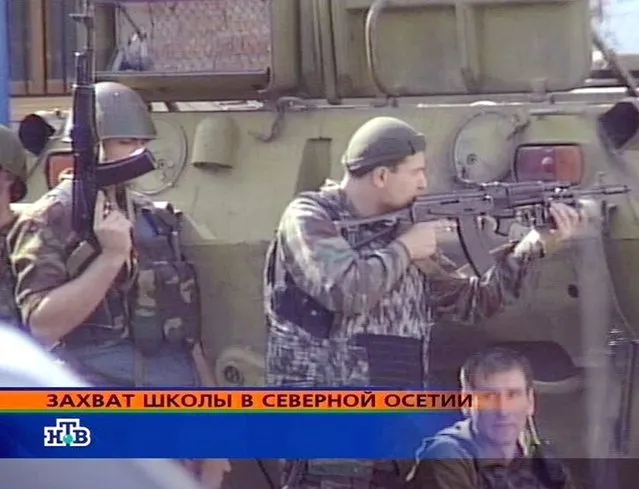
A TV grab from Russian NTV channel showing a special forces soldiers on their position at the local school building, captured by the terrorists, Beslan, North Ossetia, Wednesday, 01 September 2004. (Photo by EPA/NTV)
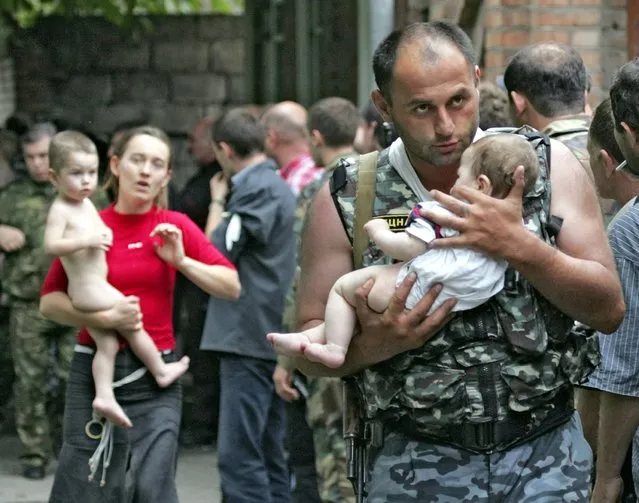
A soldier carries a baby and a woman follows him after the release of 26 women with their children in Beslan, North Ossetia, Thursday 02 September 2004. The first group of hostages were released after negotiation with the terrorists under the mediation of former president of Ingushetia Ruslan Aushev. (Photo by Sergei Chirikov/EPA)
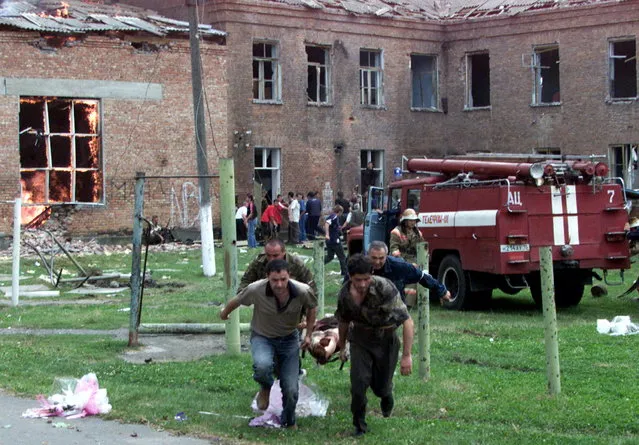
Volunteers carry an injured civilian to safety while soldiers stormed a school seized by heavily armed masked men and women in the town of Beslan in the province of North Ossetia near Chechnya , September 3, 2004. A hundred or more people were killed when Russian troops stormed a school on Friday in a chaotic battle to free parents, teachers and children who had been held hostage for 53 hours by Chechen separatists. (Photo by Reuters/Stringer)
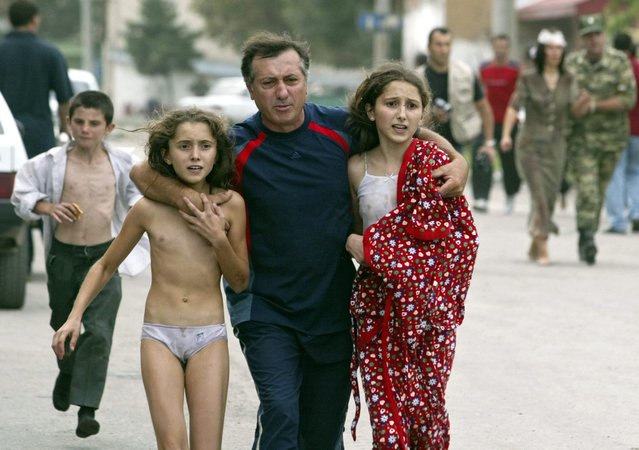
A man assists two young hostages who managed to escape from the school building after special forces entered the school in Beslan, North Ossetia, Friday 03 September 2004. Streams of hostages fled the besieged school in Beslan in southern Russia Friday amid intensive shooting and a series of powerful explosions that signalled a bloody end to the three-day stand-off with terrorists. (Photo by Yuri Kochetkov/EPA)
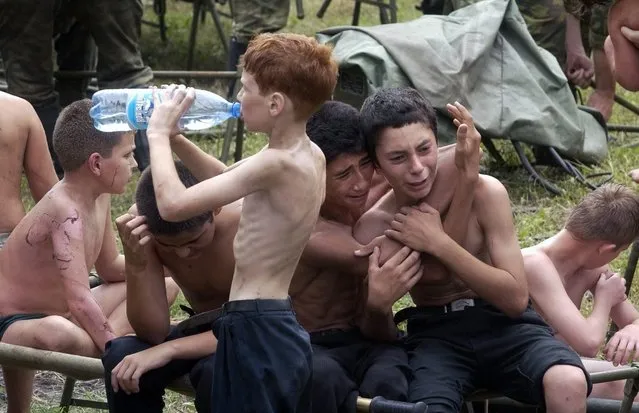
Former hostages comfort each other after special forces entered the school in Beslan, North Ossetia on Friday 03 September 2004. Streams of hostages fled the besieged school in Beslan in southern Russia Friday amid intensive shooting and a series of powerful explosions that signalled a bloody end to the three-day stand-off with terrorists. (Photo by EPA/Stringer)
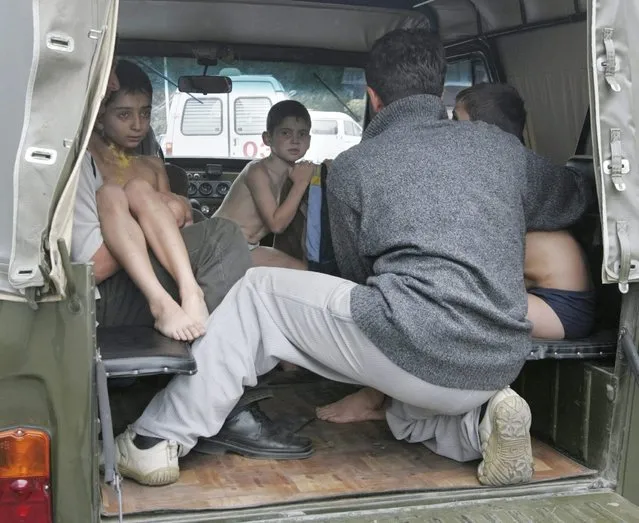
Young boys take shelter in a vehicle after their escape from the school building after special forces entered the school in Beslan, North Ossetia, Friday 03 September 2004. Streams of hostages fled the besieged school in Beslan in southern Russia Friday amid intensive shooting and a series of powerful explosions that signalled a bloody end to the three-day stand-off with terrorists. (Photo by Sergei Chirikov/EPA)
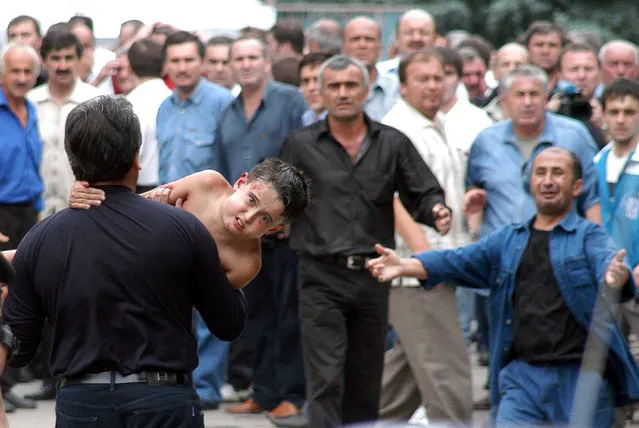
A man carries a boy who was injured in a school seized by heavily armed masked men and women in the town of Beslan in the province of North Ossetia near Chechnya, September 3, 2004. Up to 100 bodies were seen lying in a Russian school gymnasium after troops stormed the building to end a two-day siege, a British ITV News reporter said on Friday, after Russian soldiers battled Chechen separatists to end the two-day-old school siege as naked children ran out screaming amid explosions and machinegun fire. (Photo by Eduard Kornienko/Reuters)
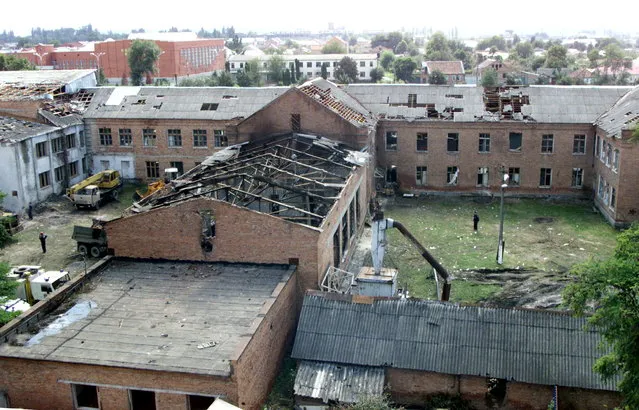
A general view shows the school building, which was seized by heavily armed masked men and women, in the town of Beslan in the province of North Ossetia near Chechnya, September 4, 2004. At least 322 people, including 155 children, died during the bloody end to a hostage-taking at a school in southern Russia, a senior prosecutor said on Saturday. (Photo by Reuters/Stringer)
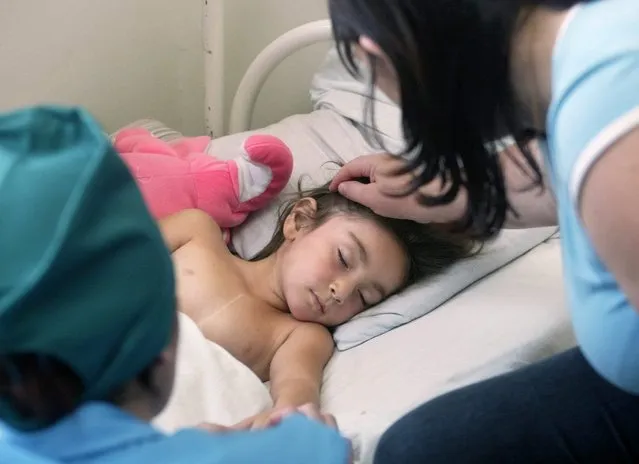
A mother touches the head of her daughter who survived the Beslan hostage crisis, in the hospital in Vladikavkz, North Ossetia, Saturday 04 September 2004. 322 hostages died and more than 600 hospitalized as a result of the Fridays hostage drama. (Photo by Sergei Dolzhenko/EPA)
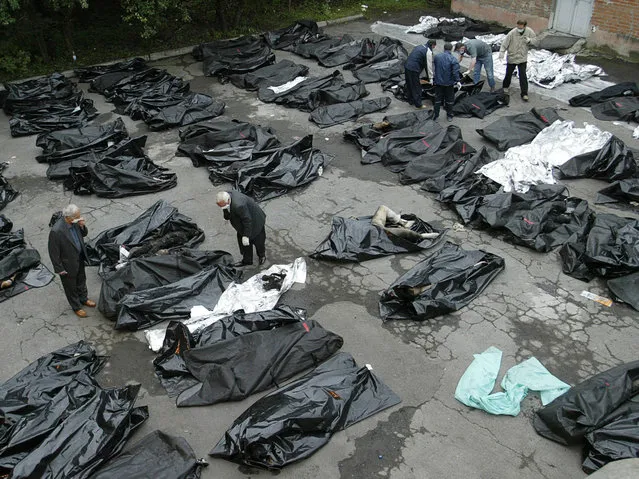
People try to identify their relatives among the bodies of Beslan hostage crisis' victims 05 September 2004, in the yard of the morgue in Vladikavkaz. The first funerals for the hundreds killed in the Russian hostage siege took place in Beslan Sunday, an AFP correspondent reported. Some 338 people were killed as a result of the three- day school siege in southern Russia, the RIA- Novosti agency quoted the spokesman for the regional president as saying on Sunday. (Photo by Viktor Drachev/AFP Photo)
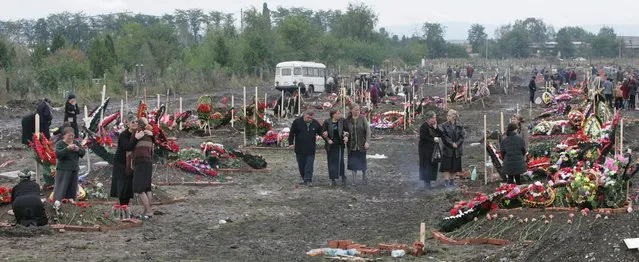
The relatives of the victims of the hostage crisis mourn at the graves on the new territory of the local cemetery on the third day of the funerals in Beslan, North Ossetia, Tuesday 07 September 2004. 335 people died in a hostage taking drama. (Photo by Sergei Chirikov/EPA)
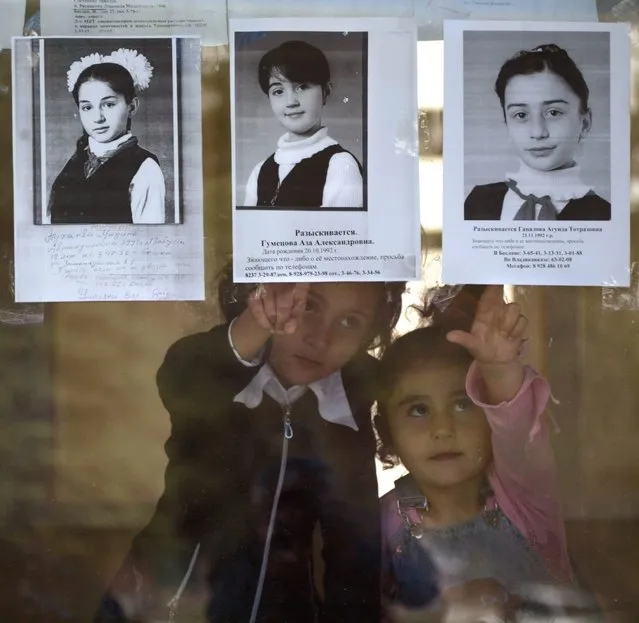
Two girls touch a window on which pictures of still missing hostages are displayed in Beslan, North Ossetia, Monday 06 September 2004. 335 people died in a hostage taking drama, as many are still missing. (Photo by Dmitry Khrupov/EPA/Novye Izvestia)
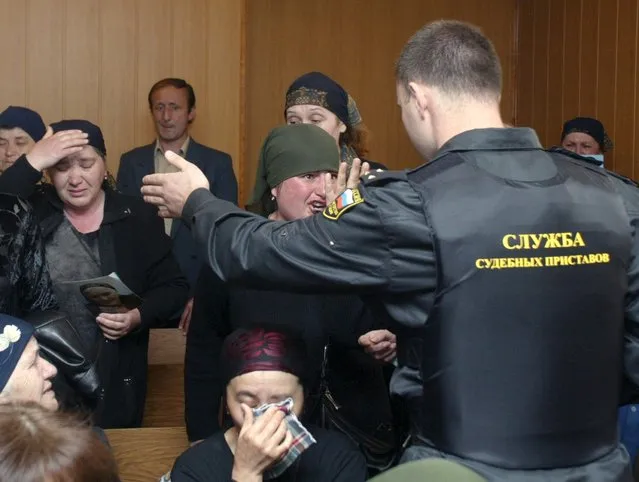
A bailiff tries to quieten the women during the trial at the court of Vladikavkaz Thursday 19 May 2005. Many people demand the lynching of Nurpasha Kulayev, the only suspected terrorist arrested during the Beslan hostage crisis. Three hundred and thirty people were killed in Beslan tragedy. (Photo by Zurab Kurtsikidze/EPA)
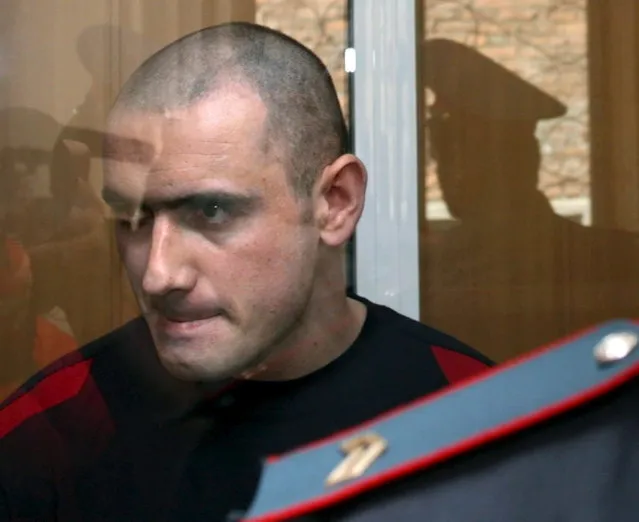
The only Beslan hostage taker caught alive Nurpashi Kulayev stands in a jail listening the verdict announcement during the last day of the trial in the court of Vladikavkaz, Friday 26 May 2006. Nurpashi Kulayev was sentenced to death, changed by the court for life imprisonment because there is a death penalty moratorium in Russia. (Photo by Zurab Kurtsikidze/EPA)
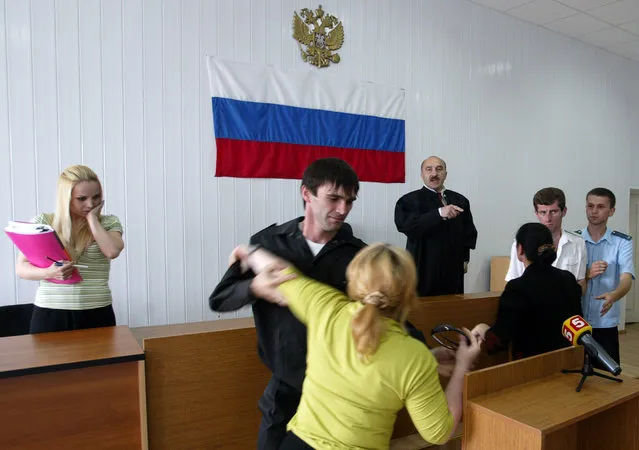
Women, who lost relatives in the 2004 Beslan school siege, try to speak to a judge in a court in the town of Beslan, outside Vladikavkaz, 29 May 2007. A court has granted amnesty to police officers and the chief of the Pravoberezhny district police department in North Ossetia, who had been charged with negligence that led to the siege in which 331 people died. (Photo by Kazbek Basayev/AFP Photo)
25 Sep 2017 06:41:00,
post received
0 comments
